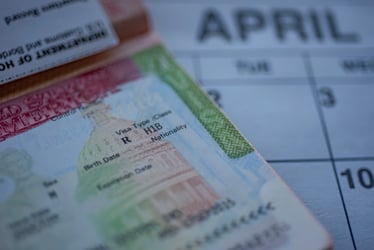Related Posts



You are about to leave Risk Strategies website and view the content of an external website.
You are leaving risk-strategies.com
By accessing this link, you will be leaving Risk Strategies website and entering a website hosted by another party. Please be advised that you will no longer be subject to, or under the protection of, the privacy and security policies of Risk Strategies website. We encourage you to read and evaluate the privacy and security policies of the site you are entering, which may be different than those of Risk Strategies.

Summary: Medical Loss Ratio (MLR) rebate season is quickly approaching and employers sponsoring fully insured group health plans are required to review their options on how to use or distribute these rebate funds within three months of receipt.
Read on for more information.
Medical Loss Ratio (MLR) is the percentage of premiums health plan insurance carriers spend on claims and expenses that improve health care quality for plan participants. The MLR provision within the Affordable Care Act (ACA) requires insurance companies to pay annual rebates if the MLR for groups of health insurance plans issued within a state is less than 85% for large employer group health plans and 80% for most small employer group health plans and individual policies. The goal of the MLR regulation is to ensure that a minimum percent of premiums are used to pay health plan claims by limiting the amount that insurance carriers can spend on plan administration, marketing, and profits. Insurance carriers that fail to meet the applicable MLR threshold are required to pay back excess profits in the form of refunds, also known as rebates, to their plan enrollees.
Since MLRs are calculated using aggregate data over an insurer’s entire book of business within each applicable market segment in every state the insurer operates, MLR rebates are not based on the unique claims experience of an individual employer group health plan.
MLR rebates for a particular year (commonly referred to as the rebate year) are calculated based on medical costs incurred during the previous calendar year. Insurance carriers are required to distribute MLR rebates and rebate notices to the policyholder of a group health plan, typically the employer sponsoring the plan for the previous calendar year.
This MLR rebate distribution deadline is September 30th of the rebate year.
The table below reflects which group health plans are subject to the MLR rules under the ACA:
|
Type of Plan |
MLR Rules Apply? |
|
Fully Insured Group Health Plans |
Yes |
|
Self-Funded Group Health Plans |
No |
|
Excepted benefit plans (such as stand-alone dental or vision plans). |
No |
Employers who receive MLR rebates for their group health plans subject to the Employee Retirement Security Act of 1974 (ERISA) plans must determine:
To determine if an MLR rebate (or any portion of it) is an ERISA plan asset, plan sponsors should review the ERISA plan documents and insurance contracts. The language in these documents may address how to allocate MLR rebates from insurance carriers. If the plan document or insurance contract is silent with respect to MLR rebates, then allocation of the rebates is determined by contributions toward plan premiums for the year related to the rebates. The DOL has provided guiding principles regarding allocation of MLR rebates in DOL Technical Release 2011-04.
Generally, if a plan premium is 100% employer-paid, the MLR rebate is not considered an ERISA plan asset and the rebate may be retained by the employer. However, if plan participants contribute toward the premium, then a corresponding portion of the premium is treated as a plan asset and cannot be retained by the employer.
Example: If an employer pays 75% of the plan premium cost while the total of employee payroll deductions and COBRA payments represented the other 25%, then 25% of the MLR rebate would be a plan asset.
MLR rebates that are considered plan assets under ERISA must be used for the benefit of plan participants and beneficiaries (in accordance with ERISA fiduciary duties), through one of the following methods:
Group health plan fiduciaries may choose which method outlined above to handle MLR rebates as long as the method is fair, reasonable, and objective.
Example: If a group health plan fiduciary finds that the cost of distributing proportional amounts of a rebate to former participants (i.e., former employees) approximates the amount of the proceeds, they may properly decide to allocate the proceeds to current participants based upon a reasonable, fair and objective allocation method.
MLR rebates, or at least the portion that is a plan asset, generally must be used or distributed as soon as possible, but no later than three months after they are received to ensure compliance with ERISA’s trust requirement relief[1].
The tax consequences of MLR rebates for employees covered under group health plans are outlined below:
Click here for the IRS MLR FAQs webpage for additional tax-related information.
Non-Federal Governmental Plans
The MLR regulations contain special rules regarding handling MLR rebates for non-federal governmental plans (such as state and local government plans, which are generally not subject to ERISA). The Department of Health and Human Services (HHS) issued separate guidance for these plans as interim final rules, providing employers three options for allocation of MLR rebates among the current plan participants[2]:
In all three options outlined above, the rebate is used to reduce premiums or is paid to participants enrolled during the year in which the rebate is actually paid, rather than the MLR reporting year on which the rebate was calculated.
Whichever option is selected, the employer can choose one of the following:
HHS clarified that employers of non-federal governmental group health plans must use the rebate for the benefit of participants no later than three months after receipt (similar to ERISA group health plans).
Church Plans
For church group health plans (non-governmental, non-ERISA group health plans), the HHS interim final rules provide that an insurance carrier may make rebate payments to the employer only if the carrier receives written assurance from the employer that the rebates will be used for the benefit of the current plan participants in the same way that a rebate to a non-federal governmental plan could be allocated (as detailed in the section above). Without this written assurance, insurance carriers are required to pay the rebate directly to employees covered under the policy during the MLR reporting year.
HHS also clarified that employers of church group health plans must use the rebate for the benefit of participants no later than three months after receipt (again, similar to ERISA group health plans).
Certain employers sponsor ERISA health plans with several options under multiple insured policies. In these situations, MLR rebates should be allocated solely for the benefit of the participants covered under the specific insured policy receiving the rebate. The use of an MLR rebate generated by one plan to benefit the participants of another plan would be a breach of the duty of loyalty to a plan's participants.
Example: An employer’s ERISA group health plan offers both a PPO and HMO plan option and the employer receives an MLR rebate in connection with the PPO plan. If any portion of that MLR rebate for the PPO plan constitutes plan assets, then that portion must be allocated for the sole benefit of the participants in the PPO plan and not for participants in the HMO plan.
Health plan insurance carriers are required to send a notice to the employer policyholder of the fully insured group health plan and to the enrolled members of the plan with details explaining the MLR rebate and how it was calculated for that reporting year. As a result, employers should be prepared to receive questions directly from employees who receive the insurance carrier notice regarding the MLR rebate.
Additionally, employers may also consider providing their own notice to employees explaining how the MLR rebate will be used, particularly if the employer is not anticipating providing direct cash refunds to employees. Employers are advised to maintain records of these employee notices.
Reach out to your Risk Strategies team members with any questions regarding MLR rebates or contact us directly at benefits@risk-strategies.com.
[1] In accordance with DOL Technical Release 2011-04, referencing DOL Technical Release 1992-01.
[2] 45 CFR § 158.242(b)(1)(i), (ii), and (iii).
The contents of this article are for general informational purposes only and Risk Strategies Company makes no representation or warranty of any kind, express or implied, regarding the accuracy or completeness of any information contained herein. Any recommendations contained herein are intended to provide insight based on currently available information for consideration and should be vetted against applicable legal and business needs before application to a specific client.


